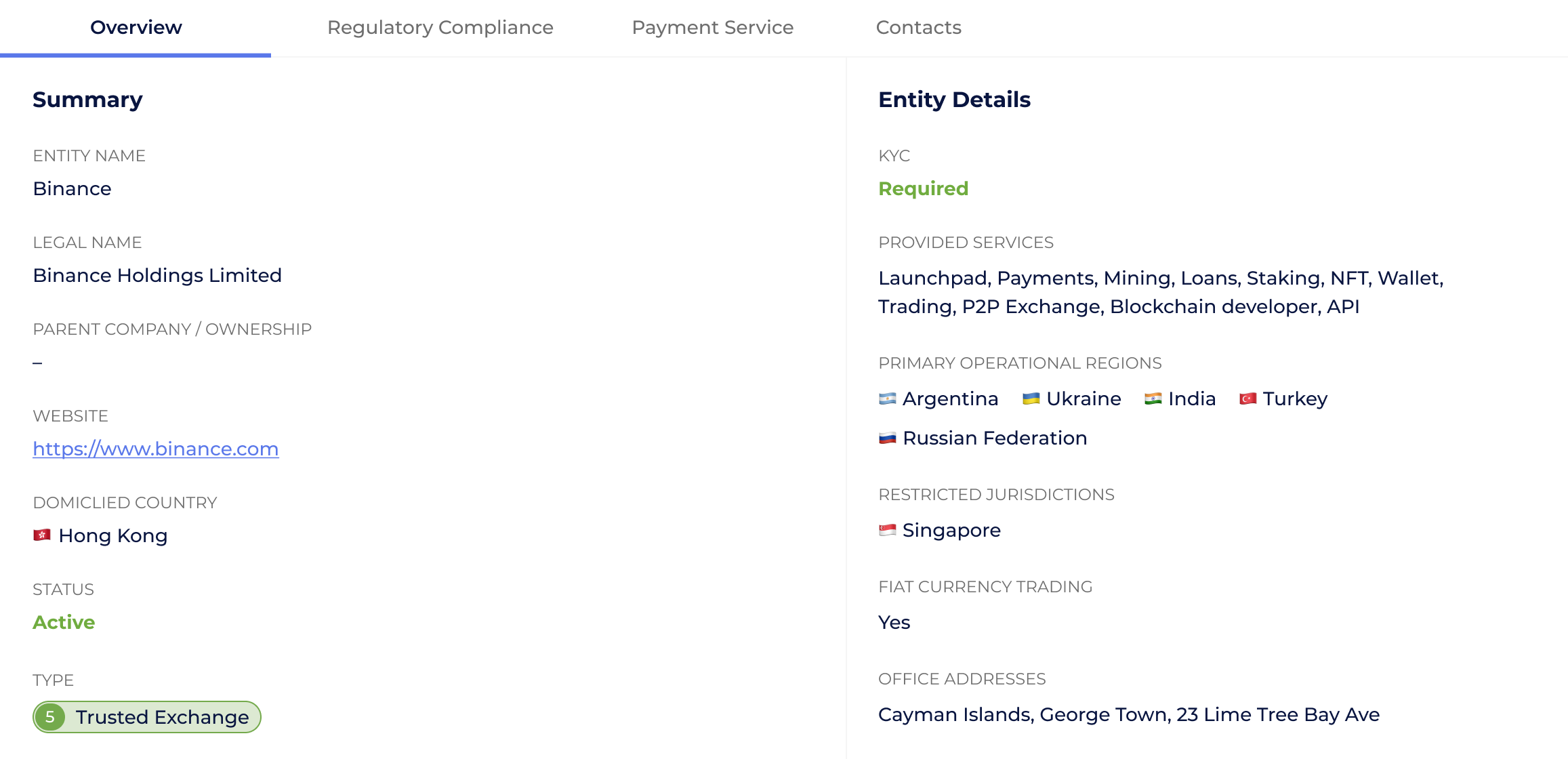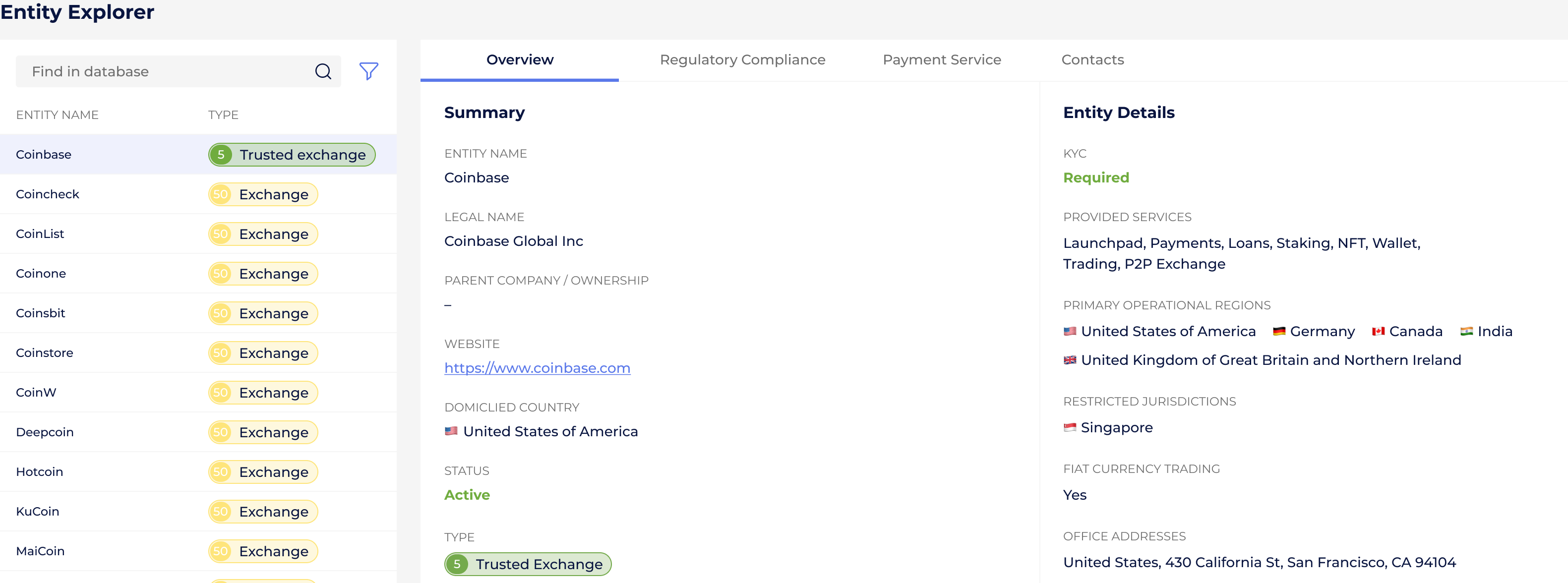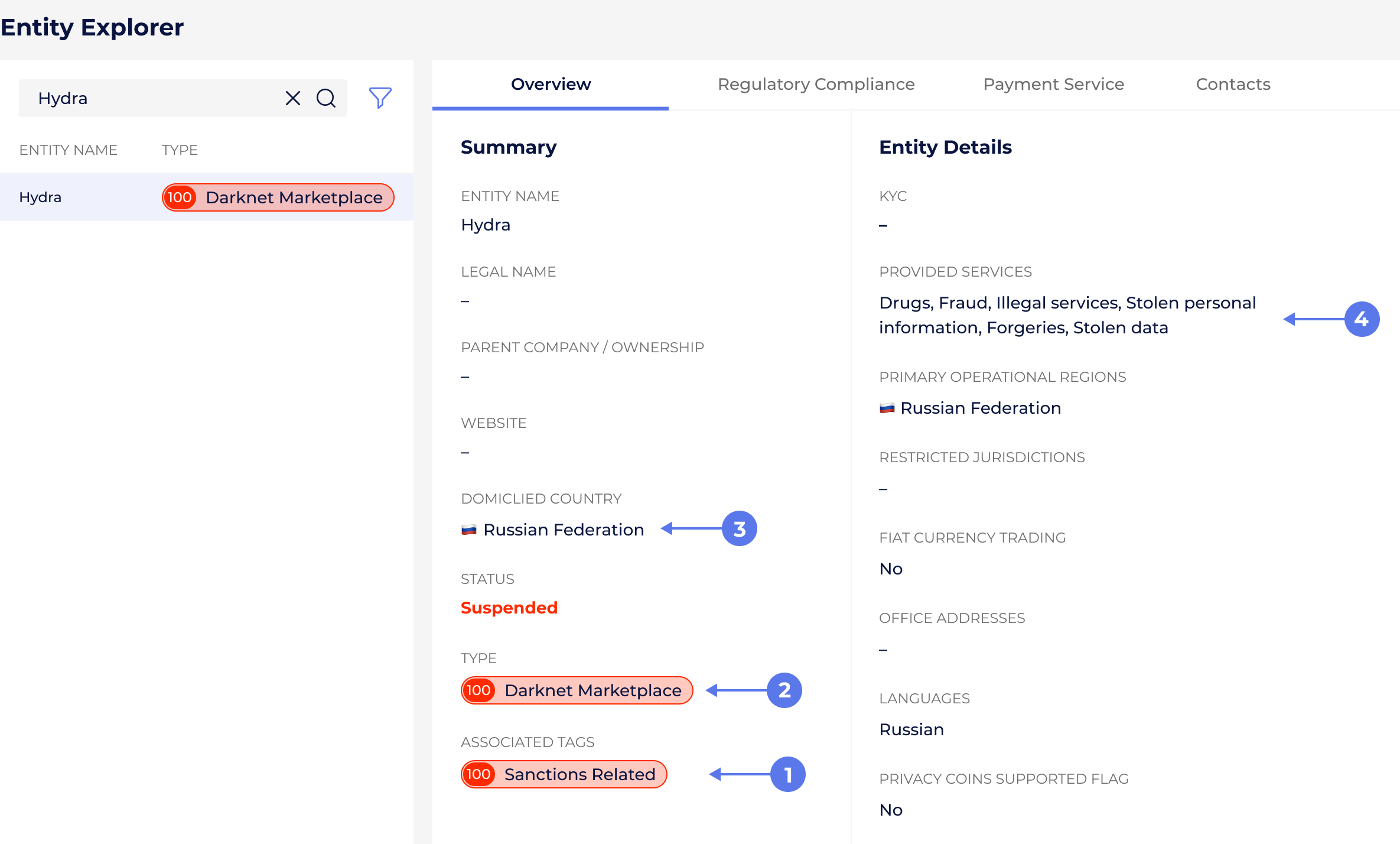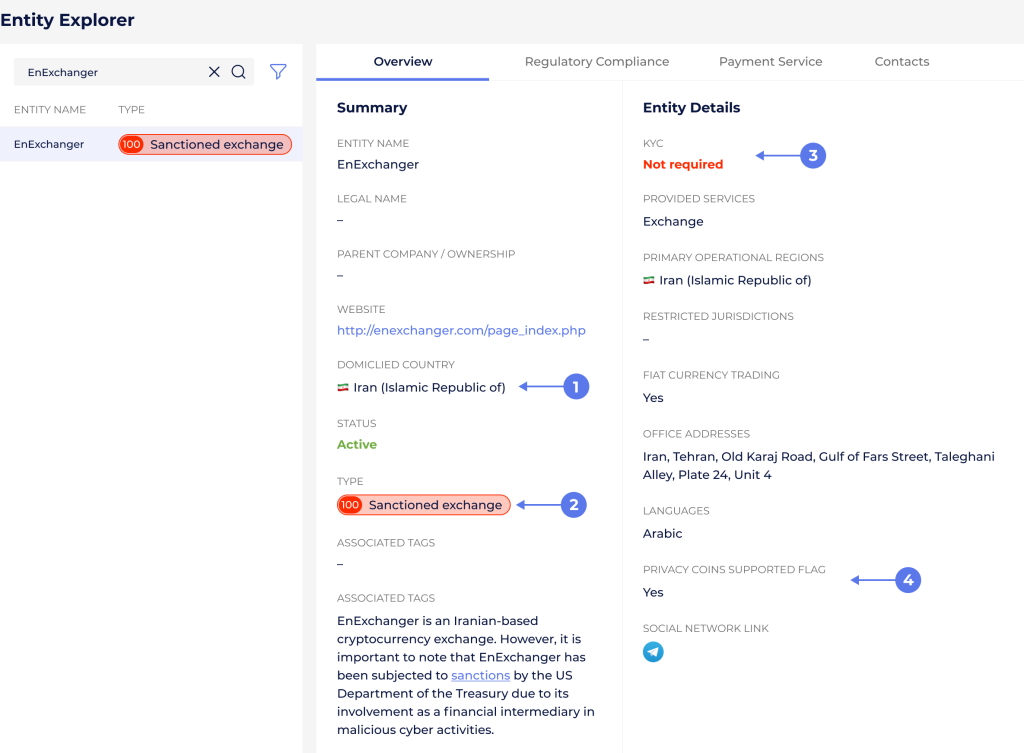
Global Ledger is thrilled to introduce a new feature: the one-page overview of essential data about entities. Our Entity Explorer makes it easier for businesses, regulators, and anyone interested in blockchain to understand different entities in the crypto world.

We’ve gathered all you need on a single page
- Ownership details
Learn who is behind the curtain, providing transparency and trust.
- Operational status
Instantly see if an entity is active, facing regulatory issues, or has ceased operations.
- Regulatory compliance
Get the essential information on compliance to understand how entities adhere to legal standards and regulations in various jurisdictions, including whether they implement KYC procedures.
- Services offered
Get a clear understanding of what each entity brings to the table.
- Jurisdictional limitations
Understand international regulations for each specific entity.
- Fiat trading information
Discover entities’ capabilities in handling fiat transactions, a critical component for many users.
- Payment services
This feature highlights available payment services, including payment types and methods, their websites, and domiciled countries.
- Contact information
Essential details to connect and engage with entities directly.

How it works? Top 3 use cases
Case 1: Streamlined investigation of suspicious wallet transactions
A compliance officer at a major bank is tasked with investigating suspicious transactions linked to a particular wallet. Coming from a traditional legal background, the world of crypto still feels like uncharted territory to them. During the investigation, the officer notices several transactions originating from a source named “Hydra,” a name they are unfamiliar with.

Instead of navigating through the internet in search of information about it, the officer turns to the Entity Explorer. A click on “Hydra” directs to a comprehensive one-page overview that sheds light on the entity behind these transactions. Hydra is a sanctions-related darknet marketplace from Russia, associated with drugs, fraud, stolen data, and other illegal services. It is obvious that this transaction should be flagged and blocked.

Case 2: Quick research with GL’s mini-wiki for investigations
A researcher orders a comprehensive report from GL regarding the flow of funds associated with, say, a new political party and its crypto financing. The aim is to uncover potential illicit activities.
While reviewing the source of funds report, the researcher encounters a transaction linked to an entity named “EnExchanger,” a name they haven’t come across before. Without further context, determining the exact nature of the risk and the reasons behind is challenging.
To gain a deeper understanding, the researcher uses the Entity Explorer. With a simple click on “EnExchanger,” they are instantly directed to a detailed page, akin to a mini-wiki designed specifically for compliance purposes. EnExchanger turns out to be an Iranian (1) sanctioned exchange (2) that doesn’t require KYC (3) and supports privacy coins (4).
This type of funding is highly likely to ruin the party’s reputation.

Case 3: Getting comprehensive data on entity-related wallets (coming soon)
The upcoming feature will allow compliance officers, researchers, and other users to view all blockchain data and the wallets associated with each entity. How can they leverage it to gain deeper insights?
- A complete set of blockchain transactions related to an entity will give a clear picture of its blockchain footprint.
- The feature will make it easier to examine the inflows and outflows of wallets and check for any patterns that might indicate risk, e.g., connections to known fraudulent activities or participation in suspicious transaction networks.
- Historical transaction data of the entity’s wallets will help assess the volume, frequency, and types of transactions conducted and understand the entity’s operational behavior over time.